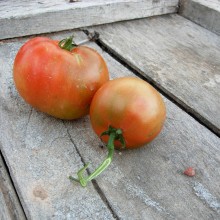So…you are tired of those high grocery bills and want to dig up some of that beautiful green turf and try your hand at becoming a backyard farmer. No doubt you also have rosy images of your children helping to tend the garden and harvest the bounty you have produced; in the process instilling a deep connection with nature and teaching them the value of a hard day’s work. Well, then this is the blog post for you…at least the starting a garden part. Ungluing your children’s attention from the TV/IPAD/computer, Prying the game controller from their hands and dragging them kicking and screaming out to that beloved patch of dirt is your problem, not mine.
The first step is to decide what type of garden you want and pick a spot that will be good for parent/child bonding (and vegetables). The two basic types of gardens are traditional ones level with the ground around it and raised beds (gardening in containers is a good option if you want to start small but I say go big or go home, plus it’s not as easy to torture your children with hours of tedious weeding [aka teaching them the value of hard work] if you only have a couple plants in pots). The advantages of a traditional garden is that it doesn’t require as much initial prep, just getting rid of the turf and adding soil amendments. Raised beds require a little more effort and expense up front in that you have to build the beds and purchase and install enough soil to fill them. After the initial setup, however, there are some advantages to raised beds:
- Soil- will be more fertile than just working with what you have. weeds will not be as much of a problem initially if you put down landscape fabric between the ground and new soil.
- Flexibility – can start with one raised bed and grow from there. They can be moved around the yard or even to a new house if you are so inclined (although with all the junk in my house I can’t imagine wanting to pack a bunch of dirty boards and 50 bags of soil).
- Accessibility – they can be built as tall as you want so you don’t need to kneel or bend over as much for maintenance. If you have multiple ones, paths in between to make them easier to get to.
Location mostly depends on sun and drainage. veggies, for the most part, need as much sun as you can give them. You also want some place blistering so that your kids will suffer as much as possible when helping (aka teaching them that nothing comes without a little sacrifice). You also want to make sure that you locate it in a spot that has good drainage. While veggies need water, you don’t want it in a low spot that is always wet; this could actually kill the plants or invite disease. Also, you would have puddles which kids will want to splash and play in. Remember, there is no time for fun in this garden…it is supposed to be an unhappy, joyless place just like where you work. Raised beds could be a solution if you have low spot but be careful they don’t block the flow of water and if the ground in between them is always wet, it could be uncomfortable to maintain.
Size all depends on how much you want to grow and, more importantly, how much you want to maintain. For most people interested in a few tomato and pepper plants,120-150 sq ft will be adequate. I have found that it is best to start with a smaller space and see how it goes. If you have 3 or more children, go ahead and start big. You can sit in a lawn chair, work on your tan and drink your beverage of choice while they toil away. We’ll give you a little time to plan where your garden will go (and to start threatening your children with manual labor) and in the next post will talk about getting rid of that turf.









